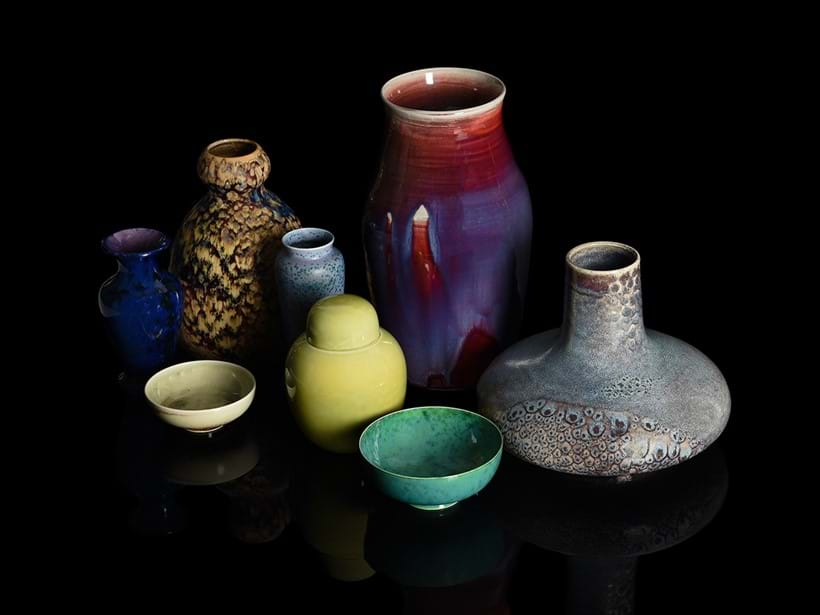The upcoming Dreweatts Interiors sale on January 10, 2024, presents a rare opportunity to acquire pieces from the private collection of William Howson Taylor, one of the greatest British ceramicists of the 20th century. Taylor was the mastermind behind the renowned Ruskin studio pottery in the West Midlands, which operated from 1898 to 1933. The collection, comprising 25 pieces, has a unique provenance, having been passed down directly from William Howson Taylor to Robert Ferneyhough and then to the current owner, Adam Ferneyhough.
What makes these pieces particularly valuable is the rarity stemming from Howson Taylor’s decision to destroy all machines, designs, and techniques used in the Ruskin pottery upon the studio’s closure in 1933. This was to prevent any imitation of Ruskin pottery, ensuring its exclusivity. The collection includes various items such as pots, vases, buttons, bowls, tea services, and jewelry, showcasing Howson Taylor’s innovative designs and distinctive glaze effects.
William Howson Taylor, along with his father Edward Richard Taylor, founded the Ruskin ceramics studio in 1898, naming it after the influential artist and thinker John Ruskin. The studio gained global recognition for its unique style and color schemes, thanks to Howson Taylor’s creative techniques. Some of these techniques include ice crystal effects, lustre glazes producing metallic effects, misty soufflé glazes, crystalline glazes, and the highly prized sang-de-boeuf and flambé glazes, creating a blood-red effect. The sang-de-boeuf glazes were particularly intricate, involving a reduction of copper and iron oxides at high temperatures.
Despite Howson Taylor’s cancer diagnosis, he refused to sell the business and instead ensured the preservation of Ruskin’s name and practices. Legal measures were taken to destroy machinery, designs, and techniques, contributing to the rarity of these pieces.

The upcoming sale features highlights such as a large high-fired vase from 1924, a high-fired vase with a liver-red part ‘snakeskin’ glaze from 1923, and a fine mottled buff color glaze vase from 1912. Each piece carries estimated values ranging from £300 to £3,000. The collection is considered special by Mark Newstead, Specialist Consultant for Asian Ceramics and Works of Art at Dreweatts, who appreciates Howson Taylor’s mastery of the elusive Chinese copper-red glazes, adapted into something unique that solidified his status as one of the greatest potters of the 20th century.
